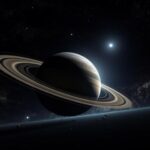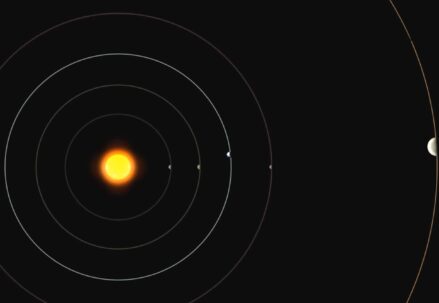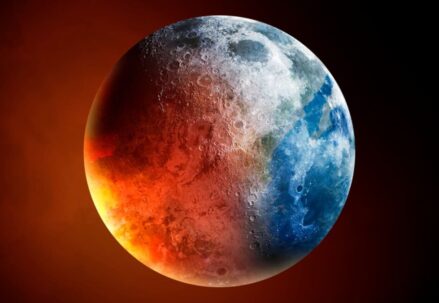Our universe is a vast and mysterious expanse, filled with phenomena that challenge our understanding. Among these are exoplanets, worlds orbiting stars beyond our solar system.
This article delves into the most bizarre and intriguing of these exoplanets. We’ll explore their unique properties and the astonishing facts that set them apart, providing a glimpse into the endless wonders of the cosmos.
Detailed Descriptions of the Weirdest Exoplanets
PSR B1620-26 b – The Ancient Wonder
- Location: Scorpius constellation, 12,400 light-years away;
- Age: Approximately 12.7 billion years, making it one of the universe’s oldest known worlds;
- Unique Feature: A circumbinary planet, orbiting two stars;
- Nickname: “Methuselah” or “The Genesis Planet”
TrES-2b – The Darkest World
- Location: 750 light-years away, orbiting star GSC 03549-02811;
- Type: Hot Jupiter;
- Remarkable Trait: Absorbs more than 99% of light, making it darker than acrylic paint.
Corot-7B – A Fiery Landscape
- Proximity: Merely 1.6 million miles from its star;
- Surface Conditions: Likely molten with potential magnesium, aluminum, and iron rains;
- Orbital Period: An astonishingly short 20 hours.
GJ 504 b – The Magenta Gas Giant
- Color: Vibrant pink due to its atmospheric composition;
- Size and Temperature: Four times Jupiter’s mass, with a surface temperature over 470° F;
- Discovery: First imaged directly using advanced adaptive optics.
55 Cancri e – The Diamond World
- Location: Cancer constellation, 40 light-years away;
- Orbital Duration: Only 18 hours around a G-Type star;
- Composition: Rich in carbon, potentially a third diamond.
WASP-12b – The Doomed World
- Size: Three times Jupiter’s size;
- Fate: Rapidly degrading orbit, possibly devoured by its star in 10 million years;
- Unique Phenomenon: Spectacular ring system formed from torn gases.
PSR J1719-1438 b – The Speedy Pulsar Planet
- Location: Serpens constellation, 3900 light-years away;
- Orbit: Ultra-Short Period around a millisecond pulsar;
- Characteristic: Shares traits with the diamond planet, 55 Cancri e.
1SWASP J1407b – The Ringed Marvel
- Distance: 420 light-years, in Centaurus constellation;
- Ring System: 200 times larger than Saturn’s;
- Travel Time Estimation: Over 7 million years at the speed of NASA’s New Horizons probe.
HD 189733b – The Hostile Giant
- Mass: 13% more than Jupiter;
- Orbital Period: A brief 2 days;
- Environment: Extremely high temperatures, more hostile than Venus.
The Science Behind Discovering Exoplanets
Discovering and studying exoplanets involves a blend of cutting-edge technology and astrophysical theories. Here’s how scientists unearth these cosmic oddities:
Detection Methods:
- Transit Photometry: Observing dimming stars as planets pass in front;
- Radial Velocity: Measuring star wobbles caused by gravitational pulls of orbiting planets;
- Direct Imaging: Rarely used due to the faintness of exoplanets compared to their stars.
Technological Advancements:
- Powerful Telescopes: Instruments like the Hubble Space Telescope and the upcoming James Webb Space Telescope provide crucial data;
- Advanced Spectroscopy: Analyzing starlight spectra to infer planet compositions.
Theoretical Models:
- Planetary Formation Theories: Understanding how different types of planets form and evolve;
- Stellar Influence: Studying how a star’s properties affect its orbiting planets.
The Future of Exoplanet Exploration
As we continue our journey through the cosmos, the study of exoplanets remains at the forefront of astronomical research. Future missions and technologies are poised to reveal even more about these distant worlds.
- Upcoming Space Missions: Projects like the European Space Agency’s PLATO mission aim to discover and characterize Earth-like exoplanets;
- The Role of Artificial Intelligence: AI and machine learning are becoming invaluable in processing the vast amounts of data collected by telescopes;
- Interstellar Probes: Conceptual ideas about sending probes to nearby star systems, like Breakthrough Starshot, hint at a future of direct exoplanet exploration.
Continuing this exploration, one might find parallels in the study of the largest known galaxy, IC 1101, which presents its own set of cosmic wonders and mysteries.
Conclusion
From the ancient Methuselah to the diamond-rich 55 Cancri e, the universe’s weirdest exoplanets offer a fascinating glimpse into the diversity and complexity of our cosmos. As technology advances, our understanding of these distant worlds continues to grow, revealing more about the nature of the universe and our place within it.
This exploration not only satisfies our curiosity but also expands our knowledge, inviting us to look further and deeper into the vast expanse of space.





